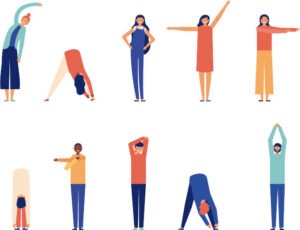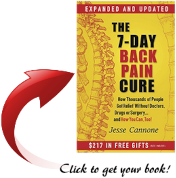Flexibility plays an important role in enhancing overall well-being and relieving pain. Through a variety of exercises and practices, increased flexibility offers various benefits that extend far beyond simple range of motion. Please note, I am not a healthcare professional or a certified fitness trainer, and what follows is not medical advice. It is my hope that you find value in the article on the benefits of flexibility as it pertains to pain relief, and it propels you to do your own research.

Image by gstudioimagen on Freepik
Today’s article delves into the diverse ways in which improved flexibility contributes to pain relief. From joint mobility to stress reduction, understanding these mechanisms sheds light on the profound impact flexibility exercises can have on alleviating discomfort and promoting overall well-being.
Increased flexibility can enhance pain relief in several ways:
- Improved Joint Mobility: When you’re more flexible, your joints have a greater range of motion. This increased mobility can alleviate stiffness and reduce pain, especially in conditions like arthritis.
- Reduced Muscle Tension: Flexible muscles are less likely to be tense and knotted. Stretching exercises can help relax tight muscles, reducing discomfort and pain.
- Enhanced Blood Circulation: Stretching and flexibility exercises promote better blood circulation. Improved circulation can help in the delivery of oxygen and nutrients to muscles and joints, aiding in their recovery and reducing pain.
- Better Posture: Flexibility exercises can help improve posture. Poor posture can lead to various types of pain, especially in the back, neck, and shoulders. By enhancing your flexibility, you can correct your posture and reduce associated pain.
- Prevention of Injuries: Flexible muscles and joints are less prone to injuries. Regular stretching and flexibility exercises make your body more resilient, reducing the risk of strains and sprains, which can cause significant pain.
- Release of Endorphins: Flexibility exercises, particularly those involving stretching and yoga, can stimulate the release of endorphins – your body’s natural painkillers. Endorphins not only help in reducing pain but also enhance your mood, promoting an overall sense of well-being.
- Improved Nervous System Function: Stretching and flexibility exercises can stimulate the nervous system, promoting better communication between the brain and the body. This improved communication can reduce pain signals sent to the brain, leading to pain relief.
- Reduced Stress: Stress and pain often go hand in hand. Flexibility exercises, especially those that incorporate mindfulness and relaxation techniques, can significantly reduce stress. Lower stress levels can lead to reduced muscle tension and pain.

It is important to note that flexibility exercises should be performed correctly and regularly to achieve these benefits. Consulting a healthcare professional or a certified fitness trainer can help design a safe and effective flexibility program tailored to your specific needs and conditions.
By including flexibility exercises into our daily routines, we can start taking steps toward a more pain-free, happy life.
To Your Success & Freedom,
Glenn Shimabukuro



